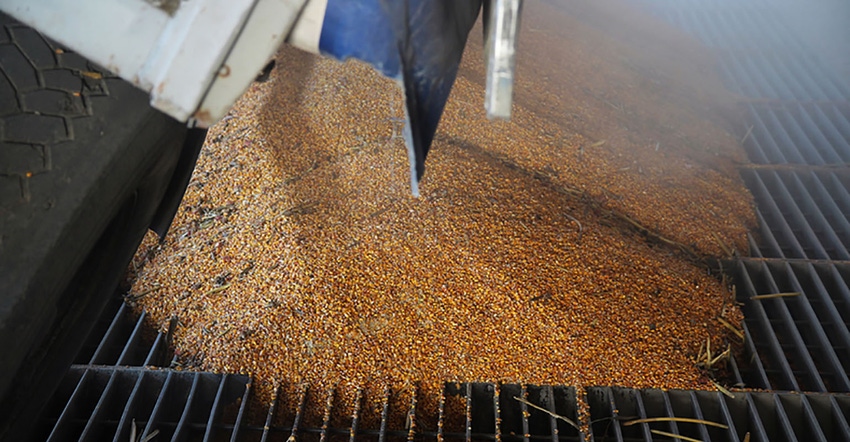
This past week we celebrated the time-honored tradition of Thanksgiving. With 2020 a year like no other in history, many probably wondered what there might be to be thankful for.
While I’d argue we always have plenty to be thankful for, this year has tried the patience of even the best of us. From most markets hitting the panic button during the initial phases of COVID-19 in the spring, to election-year antics on steroids, 2020 has had a little something for everyone.
For farmers, it appeared this year could be the worst in a line of six or seven straight lackluster years. With futures prices threatening to go to sub-$3 levels on corn as well as sub-$8 levels on beans, it appeared we could be heading for the toughest rowing we’d seen in some time.
However, a bearish August USDA report didn’t provide a bearish reaction and we started quite the rally. As we saw some impressive exports roll out (China) as well as an epic Derecho event rolling through mainly Iowa during what proved to be a flash-drought for most of the corn-belt in the month of August, we got the fire lit and away we went. My how the tables have turned. Are you thankful for this rally, my friends? I’d sure hope so.
Bullish sentiment reigns for now
$3-plus later in soybeans and $1-plus later for corn and what do we have? I’d say bullish sentiment is significantly higher than it was at $3.25 Dec corn. How does that make sense? As the market rallies, we all feel whatever is causing the rally will continue to push prices higher. Producers consistently ask me what we need to do to ‘protect’ from the prices going higher. Excuse me? We just rallied $3!
I certainly understand wanting to participate in additional moves. However, we don’t need ‘protection’ from additional upside…our risk is to the downside.
Manage downside risk
So, how do we approach a market with significant downside risk? You may say, “we can’t move lower due to Chinese demand and South American dryness.” However, I’d urge you not to think such a thing. Time and again we’ve seen the market do things we never would have dreamed.
What we need to do to approach this market, from my vantage point, is display some thankfulness by locking in some of this incredible gift we’ve already seen. We must realize the risk to consider right now, when prices are this high, is to the downside. Therefore, if we sell at profitable prices, we’re locking in income levels we never dreamed we’d see just three months ago.
Re-ownership strategies
If we choose to sell but want to remain in the game, so to speak, we can do so without leaving our neck on the chopping block. Buying a call spread to take a dollar out of the bean market isn’t terribly expensive. The same applies for corn.
The problem I see with re-ownership is trying to get too cute with our strategies. Have you ever made a good sale into a bad one? I have. It’s not fun whatsoever. So being smart about how much you risk when wanting to ‘stay long’ is imperative.
New crop sale angst
The last thing I want to address is the angst many of us feel about selling new-crop. Yes, beans are a buck and a half below nearby price. Cash corn is 50 cents higher than fall-delivery. Seeing the disparity plays a trick on our mind that those prices aren’t good enough due to what we’re seeing today in the cash market. Don’t fall for that!
It makes much more sense to consistently figure your return-on-investment so you’ll know what kind of profit margins you can lock in. Currently, you can lock in better profit margins for the 2021 crop year (at average yields) than we saw for the last six or seven straight years. Therefore, locking in some solid profit, if history is any indication, could prove to be a great risk-management decision.
Yes we have plenty to be thankful for this year. Being proactive about taking advantage of the good fortune we’ve been blessed with is simply doing good business. Happy Thanksgiving to everyone.
The risk of loss in trading futures and/or options is substantial and each investor and/or trader must consider whether this is a suitable investment. AgMarket.Net is the Farm Division of John Stewart and Associates (JSA) based out of St Joe, MO and all futures and options trades are cleared through ADMIS in Chicago IL. This material has been prepared by an agent of JSA or a third party and is, or is in the nature of, a solicitation. By accepting this communication, you agree that you are an experienced user of the futures markets, capable of making independent trading decisions, and agree that you are not, and will not, rely solely on this communication in making trading decisions. Past performance, whether actual or indicated by simulated historical tests of strategies, is not indicative of future results. Trading infromation and advice is based on information taken from 3rd party sources that are believed to be reliable. We do not guarantee that such information is accurate or complete and it should not be relied upon as such. Trading advice reflects our good faith judgment at a specific time and is subject to change without notice. There is no guarantee that the advice we give will result in profitable trades. The services provided by JSA may not be available in all jurisdictions. It is possible that the country in which you are a resident prohibits us from opening and maintaining an account for you.
The opinions of the author are not necessarily those of Farm Futures or Farm Progress.
About the Author(s)
You May Also Like






